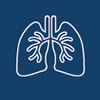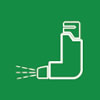Filter by Knowledge Space:

Access to Advanced Health Institute

Access to Advanced Health Institute

Amneal Pharmaceuticals


Aptar Pharma
Goncalo Farias and Charles Cazzola
Optimization of a Multidose Nasal Actuator Targeting Olfactory Region Deposition

Aptar Pharma
Pauline Faucard and Benedicte Grosjean
Leachables Assessment from a New Generation of pMDIs using Low Global Warming Potential Propellants and the Impact of Ethanol Filling
Belhaven Biopharma

Bespak

Bespak

Bespak

Bespak

CF PharmTech

H&T Presspart

H&T Presspart

Harro Höfliger


Honeywell


Hovione


Hovione
Maria Ines Lopes and Joao Pires
Drug Load Influence on Aerodynamic Properties of High Dosage DPIs: A Case Study of an Aminoglycoside Model Drug
Hovione


Hovione
Lidia Santos and Claudia Costa
Understanding Leucine Encapsulation in Dry Powder Inhaler Microparticles via Surface Characterization Techniques

Iconovo


ImmuONE


InformiX Pharma
Parmesh Gajjar and Darragh Murnane
Novel Insight into the Microstructure of Fines-Only Formulations using X-ray Computed Tomography with Machine Learning
Inspiring

IPAC-RS

IPAC-RS

Johannes Gutenberg-Universität Mainz
Moritz Fleischhauer
Tuning the Aerosol Delivery of the Respimat® Soft Mist Inhaler
Kindeva


Lonza
Sana Hosseini and Kimberly Shepard
Formulation of an Intranasal Dry Powder Vaccine Candidate for Tuberculosis

Lonza
Neerja Zambare and Kimberly Shepard
Manufacturability of Intranasal Dry Powders Spray Dried from Aqueous Solutions

Ludwig-Maximilians-University Munich
Katrin Wiebe and Simone Carneiro
Impact of Vibrating Mesh Nebulization on the Physicochemical Properties of mRNA and siRNA Lipid Nanoparticle Formulations
M2M Pharmaceuticals

Macquarie University


Medisch Spectrum Twente
Dumiana Chamaon and Martijn F. Grinovero
Validation of the RS01X™ Smart Inhaler in a Clinical Setting
Monash University


Monash University

Monash University


Monash University
Swetha Chowdary Vutlapalli and Daniel Duke
Measurement of Vapor Pressure and Viscosity of Ethanol in HFA134a, HFA152a, and HFO1234ze(E) Mixtures used in pMDIs

Nanopharm

Nanopharm

Orexo AB

Oz-UK Limited


PARI Pharma
Andrea Winzen and Martin Schlun
Aerosol Performance and Usability Evaluation of New Pediatric Facemasks for a Valved Holding Chamber

Proveris Scientific Corporation
Deborah Jones and Timothy Fallon
Inhalation and Exhalation Airflow Resistance of Valved Holding Chambers
Proveris Scientific Corporation

PULMOTREE

Purdue University

Purdue University

Resyca

RTI International


St. John's University


The University of Texas at Austin
Varsha Nair and Rex Moore
Lipid-Based Spray Dried Microparticles of Monoclonal Antibodies for Inhalation

The University of Texas at Austin
Mike Sandoval and Alan Watts
Drum Filling of Thin-Film Freeze-Dried Monoclonal Antibody Powders into a Nasal Spray System
The University of Texas at Austin

Trudell Medical International

U.S. Food & Drug Administration

U.S. Food & Drug Administration

U.S. Food & Drug Administration

U.S. Food & Drug Administration

U.S. Food & Drug Administration

Universidade Estadual de Campinas

Universidade Estadual de Campinas

University of Alabama at Birmingham

University of Bristol

University of Hong Kong

University of Michigan

University of Michigan

University of Oklahoma

University of Parma
Francesca Buttini
Comparing Carbon Emissions for Three Dry Powder Inhaler Technologies
University of Parma

University of Parma

University of Sydney

Upperton Pharma Solutions

Vast Therapeutics

Vectura

Virginia Commonwealth University

Virginia Commonwealth University

Virginia Commonwealth University

Virginia Commonwealth University

Virginia Commonwealth University

Virginia Commonwealth University

Virginia Commonwealth University

Virginia Commonwealth University

Virginia Commonwealth University

Woolcock Institute of Medical Research

















